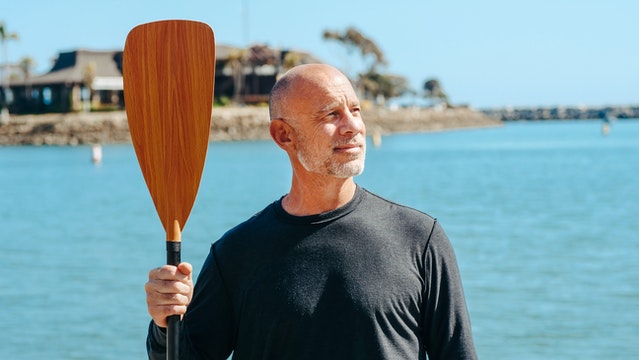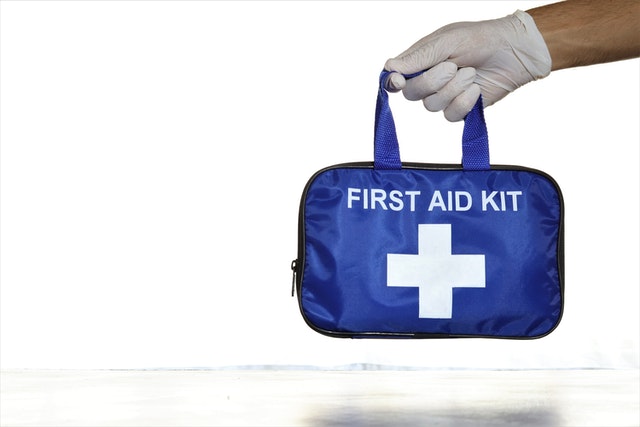Kayaking is one of the most fun and beginner-friendly water sports to try. However, a good kayak, though essential, isn’t enough for a spectacular and safe day on the water. This kayaking guide is compiled to help you determine the right equipment for your kayak trip. Read on to know the ten necessary kayaking essentials and how to use them!

Essential Gears for Kayaking
Here’s a list of kayaking supplies you need to have an epic kayaking trip:
1. Kayak

Starting with the obvious, before embarking on a kayaking trip, you need a kayak that works for you. A simple recreational kayak is the best option for beginners. These kayaks are usually short and about 4.5m long. They come with large cockpits that allow paddlers to climb in and out easily. Most of these feature a back support and foot pedal that assist the paddler steer under choppy conditions.
A sit-on-top kayak is another perfect option for beginners. It is a kayak without a cockpit. This is a good option for those worried about getting trapped. They are also more affordable, balanced, and sturdy on the water. However, you need to be prepared to get wet as the water will drop off the paddle to you.
There are many types of kayaks. Your kayak should fit your body shape, size, and weight, no matter the style. It is recommended that you test it out before purchasing.
2. Paddle

You can’t go kayaking without a kayak paddle. This is quite different from a canoe paddle. A kayak paddle is one long stem with blades on both ends. The paddles also come in various lengths. They are usually between 82 inches to 102 inches long. Your choice of paddle depends on your height; the taller you are, the longer your paddle should be.
A paddle can be matched or feathered. A matched paddle is one with blades laying at the same angle to one another and the water. For feathered paddles, the blades lay at slightly different angles to one another and the water. Your choice should depend on what makes you feel more comfortable.
You can also opt for a paddle that breaks down into four pieces for easy storage. Kayakers who plan on taking long kayaking trips should get an extra paddle if it breaks or gets lost.
3. Wetsuit/Drysuit

The golden rule of kayaking is to dress for the water and not the weather. When the temperature drops and you have both the water and weather working against you, a wetsuit would be your first line of defense. A wetsuit is a skin-tight full-body suit usually made of thick neoprene. It acts as an insulator for your body temperature in cold water. It uses the thin layer of water trapped between you and the suit to prevent heat loss.
A drysuit is perfect for severe weather conditions and when the temperature sits below 60 degrees Fahrenheit. It is a watertight suit that allows you to wear regular clothes beneath it. It forms a watertight seal, with a layer of air trapped inside to keep you dry and warm. Drysuits are more expensive than wetsuits.
4. Sunscreen/Bug Repellent

Sunscreen is a must-have when engaging in any outdoor activity. Sun exposure is a real risk while kayaking. How likely you are to get sunburned matters little when going kayaking because the sunscreen also protects from the sun’s harmful UV rays.
Stick to water-resistant sunscreens and have an SPF rating of 30 to 50. Apply it frequently to all exposed areas, and be sure to get the underside of your chin and nostril.
Water is a breeding ground for all kinds of insects like mosquitoes. In addition to your sunscreen, wear an effective bug repellent when out on the water. This would prevent insect bites and minimize the risk of contracting diseases.
5. Wet Shoes

Kayaking in “regular shoes” is very risky. It ruins the shoes, gives your feet a bad smell and puts you at risk of slipping and injuring yourself. Water shoes or wet shoes are the best options. They are made with rubber soles that grip and will help you walk on slippery surfaces.
Water shoes are of two types: open-toed and closed-toed. Open-toed water shoes are perfect for safe places with leveled grounds and still waters. If you go kayaking somewhere with sharp rocks or corals, it is recommended that you use closed-toed water shoes.
6. Bilge Pump
If you have a sit-inside kayak, then you need a bilge pump. This is a necessary safety tool that allows kayakers to remove water collected on the kayak if it flips over. A hand pump is the most popular option. It is affordable and doesn’t require much effort.
A bilge pump comes in handy when you need to dry your kayak on shore before moving it to storage. It’s lightweight and easy to store underneath your kayak seat for quick access. Bilge pumps come in neon yellow, making them easy to find in emergency cases. They are also designed with a foam collar to prevent sinking if it goes overboard.
7. Kayak Life Jacket (PFD)
The kayak life jacket (PFD) is a must-have gear for kayaking and is a piece of safety equipment required by law. Most kayak rental companies provide life jackets with your rental fees. So, confirm with your provider that a life jacket is included.
There are two popular options for kayakers —the standard and the inflatable. The most common type is the standard PFD made from buoyant foam. However, inflatable PFDs are usually more comfortable.
Your choice of personal floating device (PFD) should not be too tight and should allow you to easily adjust the waist and straps.
8. Thermal Water Bottle

Sun exposure quickly leads to dehydration. You’d want a thermal water bottle to easily access clean water to keep hydrated during your kayak trip. Spending hours kayaking will heat your water rapidly, and a thermal bottle will make sure your water stays cool.
For kayakers who go on long adventures, it is advisable to take a water purifier. You can easily refill your water bottle in fast-running streams and purify it before consuming it.
9. First Aid Kit

A first-aid kit is one of the essential gears a kayaker needs. Though you might not need it, for the most part, you will be glad to have it when you do. The supplies in the kit depend on where you are going and your personal experiences, among other factors. You should store your kit in a waterproof bag that you can easily access while kayaking.
10. Dry Bag
You’ve got a lot of stuff to take with you, and you’ll need a bag to put them in to keep them dry. A quality dry bag is handy in the water. Dry bags are waterproof bags that roll shut to form a watertight seal. Dry bags come in many shapes and sizes and are perfect for storing food and clothes. A dry box is a better option for other items like phones and cameras.

Bottom Line
Now that you have these essential kayaking gears, you are ready to pack up your supplies and enjoy a fun and safe trip. If you wish to add more kayaking supplies, flashlights, sunglasses and hats are accessories you can bring along. Don’t forget to have fun!
Frequently Asked Questions
Do Kayak Sails Work?
Kayak sails are perfect for touring and sea kayaks. It allows the user to conserve energy while being ferried around with the power of the wind. This comes in especially handy for people looking to cover significant distances.
What is a Good Speed For Kayaking?
The average speed for kayaking is about two miles per hour. Expert kayakers can achieve faster speeds over shorter distances.
How do I choose a kayak size?
The longer and slimmer a kayak is, the faster it will move. However, a wide and shorter kayak is more stable and easier to turn. A wider kayak is a good beginner’s choice.
How Far Can the Average Person Kayak in a Day?
A person’s average distance in a day is about 12 to 25 kilometers. This depends on the strength of the current, the wind, the type of kayak, and the paddle type.
How long has kayaking been around?
Following the history of kayaking, it is believed to be at least 4,000 years old. The oldest known kayak was thought to have arrived in Holland in 1577.
